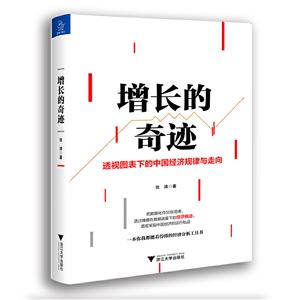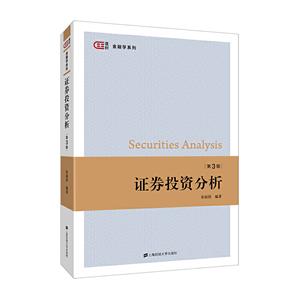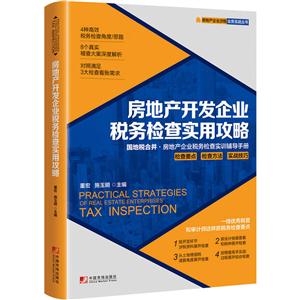货币金融学(商学院版)(高等院校双语教材·经济系列)

|
货币金融学(商学院版)(高等院校双语教材·经济系列)作者:弗雷德里克·S·米什金(Frederic.S.Mishkin) 开 本:16开 书号ISBN:9787300120829 定价:69.0 出版时间:2010-05-01 出版社:中国人民大学出版社 |
货币金融学(商学院版)(高等院校双语教材·经济系列) 本书特色
《货币金融学(商学院版)》是高等院校双语教材·经济系列。
货币金融学(商学院版)(高等院校双语教材·经济系列) 内容简介
本书是米什金传统的《货币金融学》(第八版)的替代版本,是主要为商学院学生教学而写的。在写作本书时,作者除保留了传统版本中的核心内容外,还根据商学院的教学特点进行了适当的增补和删减。与传统版本相比,本书在讲述金融机构的部分,除了继续保留非银行金融机构、金融衍生工具等有关章节外,还特设专章详述金融行业的利率冲突;但删除了讲述is—lm模型和理性预期的政策含义的有关章节。
对于那些具备中级宏观经济学知识,希望把更多精力集中在金融方面,而不太关注货币理论研究的读者,本书非常适合。
本书配有内容丰富的网上教学资源库,读者可填写书后的《教学支持服务表》获取相关资源。
货币金融学(商学院版)(高等院校双语教材·经济系列) 目录
第1篇 导言第1章 为什么研究货币、银行与金融市场
第2章 金融体系概览
第3章 什么是货币?
第2篇 金融市场
第4章 理解利率
第5章 利率行为
第6章 利率的风险结构与期限结构
第7章 股票市场、理性预期理论与有效市场假定
第3篇 金融机构
第8章 金融结构的经济学分析
第9章 银行业与金融机构的管理
第10章 银行业:结构与竞争
第11章 银行监管的经济学分析
第12章 非银行金融机构
第13章 衍生金融工具
第14章 金融行业的利率冲突
第4篇 中央银行与货币政策操作
第15章 中央银行的结构与联邦储备体系
第16章 多倍存款创造和货币供给过程
第17章 货币供给的决定因素
第18章 货币政策工具
第19章 中央银行的职责是什么?货币政策目标、策略和战略
第5篇 国际金融与货币政策
第20章 外汇市场
第21章 国际金融体系
第6篇 货币理论
第22章 货币需求
第23章 总需求与总供给分析
第24章 货币政策传导机制的实证分析
第25章 货币与通货膨胀
词汇表
部分问答题和思考题答案
货币金融学(商学院版)(高等院校双语教材·经济系列) 节选
《货币金融学(商学院版)》是米什金传统的《货币金融学》(第八版)的替代版本,是主要为商学院学生教学而写的。在写作《货币金融学(商学院版)》时,作者除保留了传统版本中的核心内容外,还根据商学院的教学特点进行了适当的增补和删减。与传统版本相比,《货币金融学(商学院版)》在讲述金融机构的部分,除了继续保留非银行金融机构、金融衍生工具等有关章节外,还特设专章详述金融行业的利率冲突;但删除了讲述IS-LM模型和理性预期的政策含义的有关章节。对于那些具备中级宏观经济学知识,希望把更多精力集中在金融方面,而不太关注货币理论研究的读者,《货币金融学(商学院版)》非常适合。《货币金融学(商学院版)》配有内容丰富的网上教学资源库,读者可填写书后的《教学支持服务表》获取相关资源。
货币金融学(商学院版)(高等院校双语教材·经济系列) 相关资料
插图:High employment is a worthy goal for two main reasons: (1) the alternative situation——high unemployment——causes much human misery, and (2) when unemployment is high, the economy has both idle workers and idle resources (closed factories and unused equipment), resulting in a loss of output (lower GDP).Although it is clear that high employment is desirable, how high should it be? At what point can we say that the economy is at full employment? At first, it might seem that full employment is the point at which no worker is out of a job——that is, when unemployment is zero. But this definition ignores the fact that some unemployment, called frictional unemployment, which involves searches by workers and firms to find suitable match ups, is beneficial to the economy. For example, a worker who decides to look for a better job might be unemployed for a while during the job search. Workers often decide to leave work temporarily to pursue other activities (raising a family, travel ,returning to school), and when they decide to reenter the job market, it may take sometime for them to find the right job. Another reason that unemployment is not zero when the economy is at full employment is structural unemployment, a mismatch between job requirements and the skills or availability of local workers. Clearly, this kind of unemployment is undesirable. None the less, it is something that monetary policy can do little about. This goal for high employment is not an unemployment level of zero but a level above zero consistent with full employment at which the demand for labor equals the supply of labor. This level is called the natural rate of unemployment.
管理 金融/投资 金融理论
在线阅读
- 最新内容
- 相关内容
- 网友推荐
- 图文推荐
| [高考] 2022 西安电子科技大学《软件工程》大作业答案 (2022-04-25) |
| [家长教育] 孩子为什么会和父母感情疏离? (2019-07-14) |
| [教师分享] 给远方姐姐的一封信 (2018-11-07) |
| [教师分享] 伸缩门 (2018-11-07) |
| [教师分享] 回家乡 (2018-11-07) |
| [教师分享] 是风味也是人间 (2018-11-07) |
| [教师分享] 一句格言的启示 (2018-11-07) |
| [教师分享] 无规矩不成方圆 (2018-11-07) |
| [教师分享] 第十届全国教育名家论坛有感(二) (2018-11-07) |
| [教师分享] 贪玩的小狗 (2018-11-07) |






